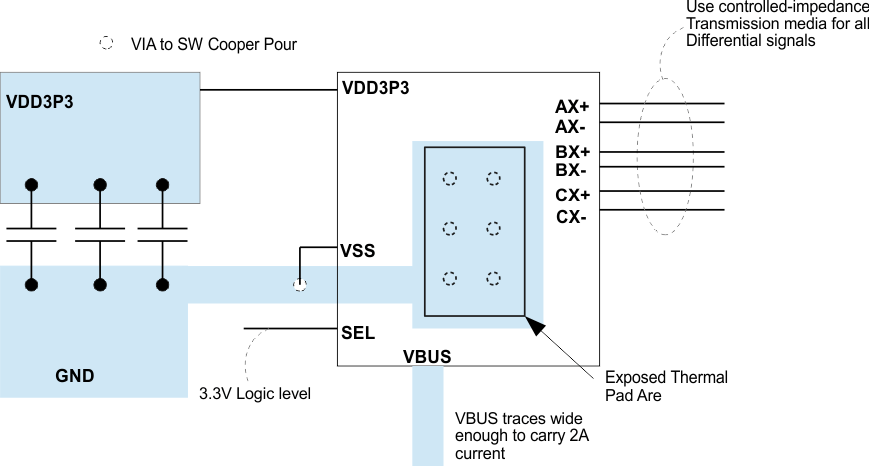ZHCS832C March 2012 – October 2015 HD3SS3415
PRODUCTION DATA.
12 Layout
12.1 Layout Guidelines
- Decoupling caps should be placed next to each power terminal on the HD3SS3415. Take care to minimize the stub length of the trace connecting the capacitor to the power pin.
- Avoid sharing vias between multiple decoupling caps.
- Place vias as close as possible to the decoupling cap solder pad.
- Widen VDD/GND planes to reduce effect of static and dynamic IR drop.
- The VBUS traces/planes must be wide enough to carry maximum of 2 A current
12.2 Layout Example
 Figure 17. Layout Example
Figure 17. Layout Example